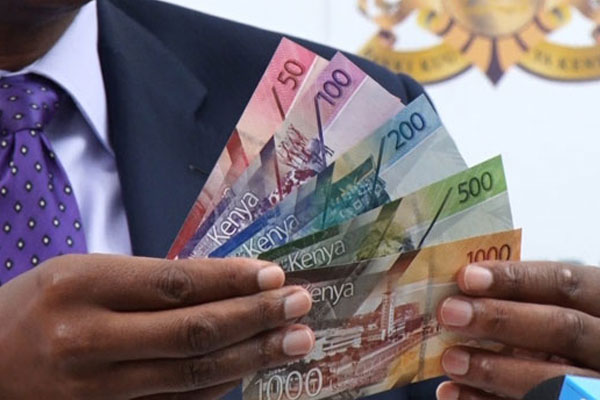Kenyan currency only one that appreciated in 10 sub-Saharan countries

John Otini
The shilling was the fourth best performing currency in Africa last year and the best performer in 2018 helped by a narrowing current account deficit and strong diaspora inflows, Reuters data shows.
The shilling gained 0.5 per cent last year against the dollar and was the only currency in 10 sub-Saharan economies reviewed that appreciated in 2018.
South Africa Rand, Botswana’s Pula and Uganda’s shilling were the main gainers having depreciated sharply in 2018.
Kenya’s current account deficit improved by 7.6 per cent during the third quarter of last year, coming in at a deficit of Sh101 billion, from Sh109.3 billion in the third quarter of 2018.
This was mainly driven by a reduction in the gap between imports and exports, Kenya’s imports are normally higher than exports.
Expected stability
“In our view, the shilling should remain relatively stable to the dollar in the short term,” Cytonn Investments said in a statement.
The Kenya shilling was yesterday trading at Sh101.2 to the dollar according to the central bank website mainly due to low demand for hard currency from importers, traders said.
As at opening of business yesterday, commercial banks quoted the shilling at 101.25/45 per dollar, compared with 101.15/35 at Tuesday’s close.
It was also supported by inflows of hard currency from remittances by Kenyan workers abroad and offshore investors.
The Ugandan shilling heldsteady against the dollar on Tuesday mainly due to a sluggish demand for hard currency by importers.
At 7am commercial banks quoted the shilling at 3,705/3,715, unchanged from Monday’s closing level.
Investors looking to participate in the equities market to take advantage of the cheap valuations in the market are expected to further support the local currency.
CBK’s supportive activities in the money market, such as repurchase agreements and selling of dollars boosted the shilling.
High levels of forex reserves, currently at $8.8 billion (Sh891.9 billion) equivalent to 5.4 months of import cover, above the statutory requirement of maintaining at least four months of import cover, and the EAC region’s convergence criteria of 4.5 months of import cover.
An improvement in tourist arrivals last year also increased hard currency inflows lifting demand for the shilling.
The shilling normally outperforms many regional currencies because Kenya has a larger basket of exporter proceeds such as horticulture, coffee, tea, cement, flour, cooking fat, diaspora flows and other commodities into the neighbouring countries.
A strong and stable macroeconomic environment also helped to boost investor sentiment and attracted more investor flows into the country.
Foreign proceeds
Exporters, however, always advocate for a weaker shilling to earn more foreign currency proceeds for their goods.
Kenya’s main exports of tea and tourism, however, face challenges from US-Iran tensions even as high oil prices also raise the prospect of a high import bill.
The central bank in a recent study says the country’s real exchange rate has remained largely consistent with economic fundamentals and that the shilling was in fact, largely undervalued.











